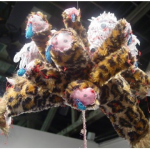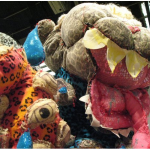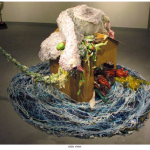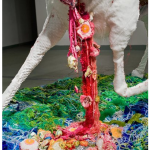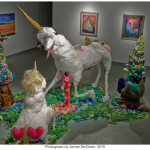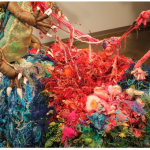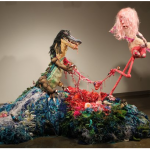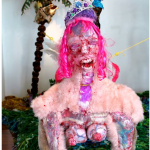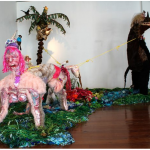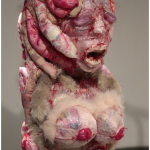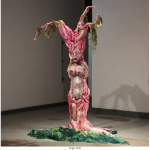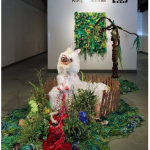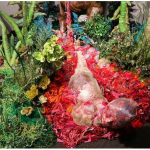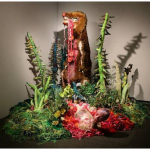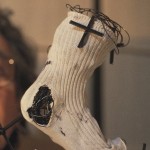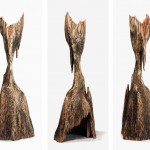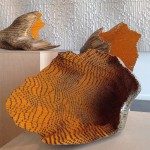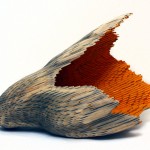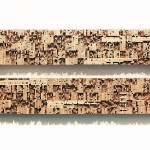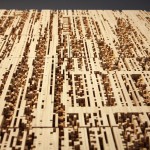OBJECTIVE:
On this project, you have the choice of 1 of 3 different prompts:
- Create a sculptural interpretation of something you want, but you cannot have (for whatever reason – cost, location, etc) – be ready to explain your choices
- Create a sculptural interpretation of something you both love and hate – be ready to explain your choices
- Create a sculptural trophy – be prepared to explain what it is a trophy for, and why it looks the way it does.
Whichever prompt you choose it must incorporate both hard elements constructed of wood, and stuffed fabric elements. The fabric (ANY fabric) can be stuffed with fiber fill (a limited amount provided) or any other material (think outside the box – sand, beans, wire, etc.)
STEPS:
- Research/Brainstorm: Find at least 5 artists working in wood and 5 artists working with fabric/fibers/soft sculptures that intrigue you. Print off photos of their work in color and put them in your sketchbook. Also in your sketchbook, create at least 10 thumbnail sketches for 10 different ideas for your project. We’ll share the research/thumbnails in class. Be sure to think about the tools available – how do they help and limit you?
- Sketches/Narrowing Ideas: Having heard everyone else’s ideas and research, sketch out 3 ideas in greater detail (devote at least 1 whole sketchbook page to each of these ideas – fill the page – draw large). You will make rough 3D mock-ups of each of these 3 ideas out of paper. We will share these refined ideas in class.
- Select idea and begin working: Once you select your idea, you can begin working. Each student will get a set amount of materials; anything beyond that is the responsibility of the student. We will have in-process critiques – see schedule for dates.
- Final Critique: We will hold a final critique of the sculptures
- Document your work.
- Self-reflection: After the project is over, you will answer the following questions on Canvas to revisit your project and review how you performed. [1.] Discuss your work in terms of the components of an artwork. (subject/form/content/context) [2.] How does the work engage with elements and principles of 3D design? Make sure to mention specific elements and specific principles. [3.] How was your project successful? [4.] How could your project be improved?
GRADING:
Research/Brainstorming – 5pts
3 Sketches/Mock-ups – 5pts
Craft of finished sculpture (how well did you work with your materials) – 5pts
Originality/Inventiveness of finished sculpture; quality of your material choices – 5pts
Quality of your compositional choices – 5pts
Self-Reflection – 8pts
Everyone is responsible for following the SAFETY GUIDELINES for the woodworking machines.
Info related to working with fabric:

Shears – A type of scissors used for cutting fabric, not paper. They have one small round hole for thumb and large oval hole for rest of fingers.
Scissors – Used for snipping threads, cutting corners, and trimming seams. They have two small ring handles the same size.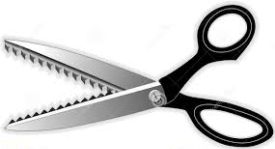
Pinking Shears – A type of shear that creates a zigzag pattern when it cuts.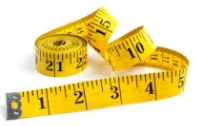
Tape Measure – A long, flexible form of a ruler.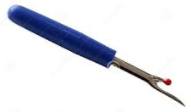
Seam Ripper – A small tool used for undoing stitches.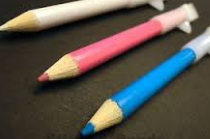
Marking Chalk – Used to transfer or mark seam allowances or darts onto fabric.
- Point Turner – Tool used to turn the corners of a pillow or garment.
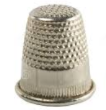
Thimble – A cover for the middle finger to protect it when you push the needle through the fabric.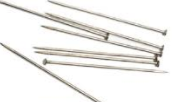
Straight Pins – Sharp pins with a stop on one end, used to hold fabric together.
Safety Pins – Pins that have a hood on them, good for long-term use.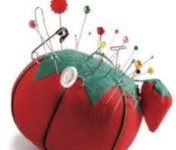
Pincushion – A place to store your pins after you remove them from fabric.
Hand Sewing Needle – A long, slender tool with a sharp point on one end and an eye on the other, used to carry thread through fabric.- GUIDE TO VARIOUS STITCHES
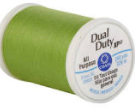
All-Purpose Thread – A cotton or polyester thread that can be used for many different sewing tasks. All-purpose threads vary by manufacturer.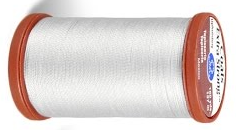
Upholstery Thread – Extra strong, heavy duty specialty thread that is ideal for both hand and machine sewing heavyweight fabrics such as upholstery fabric. It is often water resistant for outdoor use. Upholstery thread has a weight of 30, which indicates that 30 kilometers of thread will weigh one kilogram. The higher the weight of the thread, the finer or lighter the thread. An everyday sewing thread weight is 60.
Embroidery Thread – Thread that is spun specifically for embellishment. Typically, embroidery thread is used in machine embroidery while embroidery floss is used for hand embroidery.
Embroidery Floss – Cotton yarn composed of six plies that is used for hand embroidery
SOURCE: http://www.4-hmall.org/curriculum/Look-Inside/PL/Sewing/4H2210_LookInside.pdf
